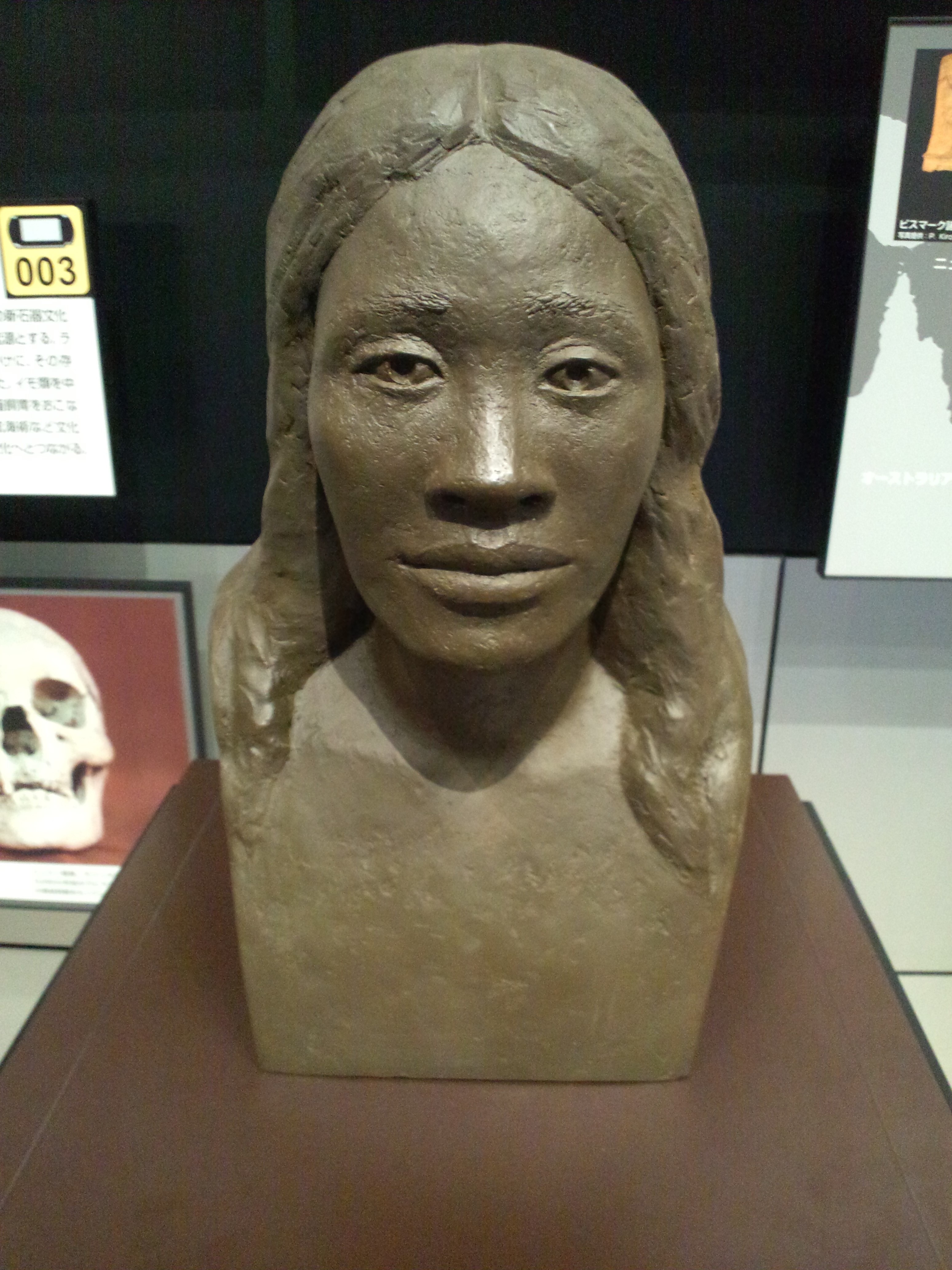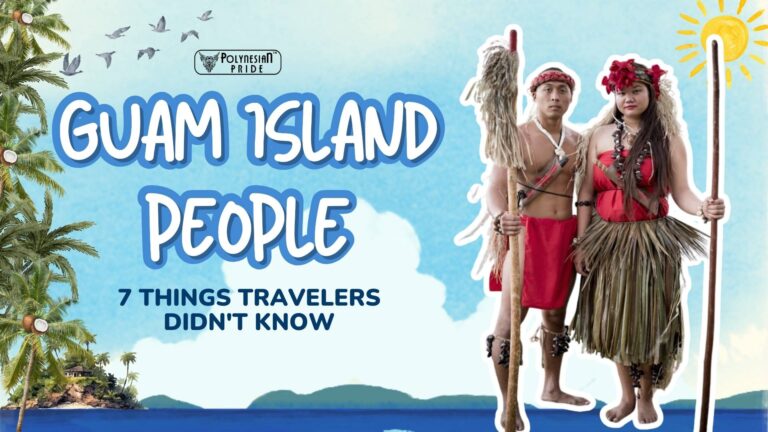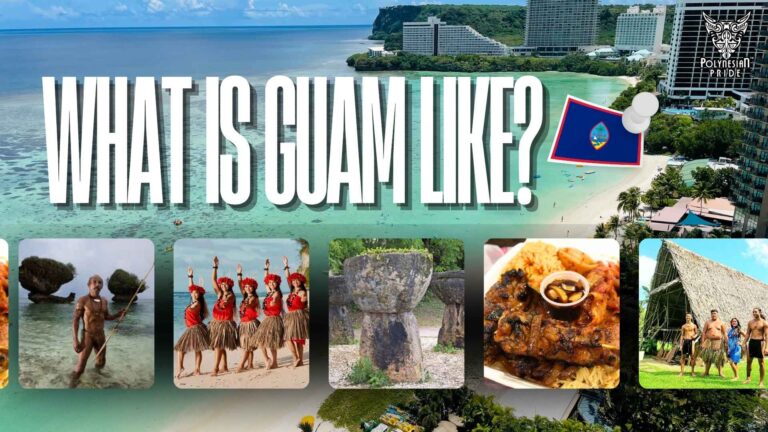Tonga Island: Discovering the Heart of the South Pacific

I. Introduction
Nestled in the heart of the South Pacific, Tonga is a breathtaking archipelago that captivates travelers with its rich culture, stunning natural beauty, and a unique blend of ancient traditions and modern influences. From pristine beaches to rugged volcanic landscapes, this island nation offers a truly immersive experience that will leave you spellbound.
In this introductory article, we will delve into the geographical features, historical milestones, cultural nuances, and standout attractions that define the essence of Tonga Island. Let’s embark on a journey to explore its wonders, where every moment is infused with the spirit of Aloha.
II. Geography
Tonga, a Polynesian kingdom, is a hidden gem in the vast expanse of the Pacific Ocean. It is a sprawling archipelago comprising 171 islands across the South Pacific Ocean. Its geography is as diverse as it is breathtaking, offering a tapestry of volcanic landscapes, lush tropical rainforests, and pristine white-sand beaches.
A. Location and Size

It is situated in the western part of the South Pacific Ocean, approximately two-thirds of the way from Hawaii to New Zealand. It spans over 800 islands, 36 of which are inhabited. Its total land area is approximately 289 square miles (748 square kilometers), making it one of the smallest nations in the Pacific.
B. Population
As of 2023, it has a population of around 105,000 people, with the majority residing on the main island of Tongatapu. The population is predominantly Polynesian, with a small percentage of other Pacific Islanders and Europeans.
C. Geology and topography
It is a volcanic archipelago formed by the collision of the Pacific and Indo-Australian tectonic plates. Its islands range from low-lying coral atolls to rugged, mountainous islands with dramatic cliffs and volcanic peaks.

The highest point in Tonga is Kao Island, reaching an elevation of 3,389 feet (1,033 meters). Other notable islands include Vava’u, known for its stunning lagoons and caves, and Eua, renowned for its striking geological formations and lush rainforests.
D. Climate
It enjoys a tropical maritime climate, with warm temperatures and high humidity throughout the year. The average temperature ranges from 75°F to 86°F (24°C to 30°C), with a slightly cooler and drier period from June to November.
The islands experience a distinct wet season from December to April, with occasional tropical cyclones and heavy rainfall. However, the weather remains pleasant, making Tonga an ideal destination for year-round beach vacations and outdoor activities.
III. History
According to Tongan mythology, the demigod Maui drew up a group of islands from the ocean, first appearing in Tongatapu, the Ha’apai Islands, and Vava’u, integrating into what became modern-day Tonga.
An Austronesian-speaking group linked to what archaeologists call the Lapita culture covered from the Island of Melanesia to Samoa and then on to inhabit it sometime between 1500 and 1000 BC. Scholars are still discussing when it was first settled, but thorium dating has confirmed that people had arrived in Nukuleka by 888 BC, give or take 8 years. Tonga’s history before contact was kept alive through oral tradition, passed down from generation to generation.
In the 12th century, Tongans and their king, the Tuʻi Tonga, were well-known throughout the central Pacific region. Their influence extended to Niue, Samoa, Rotuma, Wallis and Futuna, New Caledonia, and Tikopia. Some historians suggest there was a Tuʻi Tonga Empire during this time. Tonga experienced civil wars in the 15th and 17th centuries.


William Mariner, a young English sailor, was taken in by a royal Tongan family. The Tongan people first encountered Europeans in 1616 when the Dutch ship Eendracht, led by Willem Schouten, briefly visited for trade. Other Dutch explorers like Jacob Le Maire and Abel Tasman also arrived in the following years. Notable European visitors included James Cook of the British Royal Navy in 1773, 1774, and 1777, Spanish Navy explorers Francisco Mourelle de la Rúa in 1781 and Alessandro Malaspina in 1793, the first London missionaries in 1797, and Wesleyan Methodist minister Reverend Walter Lawry in 1822.
In 1845, a young and ambitious Tongan warrior named Tāufaʻāhau united Tonga into a kingdom. A skilled strategist and orator, he held the chiefly title of Tuʻi Kanokupolu and was baptized by Methodist missionaries as Siaosi (“George”) in 1831. With the assistance of missionary Shirley Waldemar Baker, he declared Tonga a constitutional monarchy in 1875. This significant reform included adopting the Western royal style, the emancipation of “serfs,” establishing a legal code, a land tenure system, freedom of the press, and limiting chiefs’ power.

On May 18, 1900, it became a protected state under a Treaty of Friendship with Britain, following failed attempts by European settlers and rival chiefs to dethrone Tāufaʻāhau’s successor. The treaty ensured it retained its sovereignty, with only a British consul present from 1901 to 1970. As a result, it remained the only Pacific nation to retain its monarchical government and followed an unbroken succession of hereditary rulers.

The 1918 flu pandemic, brought to Tonga by a ship from New Zealand, had a devastating impact, killing 1,800 Tongans, about 8% of the population. Tonga’s protected status and the Treaty of Friendship ended in 1970, following arrangements made by Queen Salote Tupou III before she died in 1965. Despite colonial pressures, it uniquely maintained self-governance in the Pacific. When joining the Commonwealth in 1970 as a monarchy, it became a United Nations member in September 1999.
In January 2022, the Hunga Tonga–Hunga Haʻapai volcano erupted, triggering a tsunami that inundated parts of the archipelago, including Nukuʻalofa. The disaster heavily impacted Tonga, severing communications and resulting in four deaths, including a British national. Additionally, two women in Peru drowned due to abnormal tsunami waves. The submarine fiber optic cable for internet and telephone connectivity took approximately five weeks to repair.
IV. Culture
The culture of Tonga is woven with ancient traditions, vibrant ceremonies, and a deep reverence for the land and sea. This unique blend of Polynesian heritage and modern influences creates a captivating cultural experience for visitors.
A. Fahu
Fahu is a deeply ingrained concept in Tongan culture that revolves around respect, honor, and social hierarchy. It governs interpersonal relationships, traditional ceremonies, and everyday interactions within the Tongan society.
Fahu dictates that individuals must respect and deference to those of higher social rank or status, such as chiefs, elders, and royal family members.
Ceremonies and rituals are often performed by Fahu, with specific protocols and etiquette observed. Fahu extends to various aspects of life, including language, dress, and seating arrangements during gatherings.
B. Sport
Sports play a significant role in Tongan culture, with rugby being the national passion. The Tongan rugby team, known as the “Ikale Tahi” (Sea Eagles), has gained international recognition for its fierce competitiveness and dedication.
Other popular sports in Tonga include:
- Cricket
- Soccer
- Boxing
- Outrigger canoeing
Sports events and competitions are often celebrated with traditional dances, feasts, and ceremonies, highlighting the deep connection between sports and cultural expression.
C. Contemporary Tongan Art
From intricate carvings to bold tapa designs, the creative heritage of Tongan art extends into every aspect of life, including traditional Tongan clothing, which continues to inspire and influence contemporary Tongan art across various forms.

Tapa cloth making: A traditional art form involving the creation of intricate patterns and designs on bark cloth.
Woodcarving: Intricate carvings depicting Tongan mythology, legends, and cultural symbols.
Weaving: Skilled artisans use pandanus leaves and other natural materials to weave intricate mats, baskets, and other functional items.
Painting and sculpture: Modern Tongan artists blend traditional motifs with contemporary styles, creating captivating works of art.
Many of these art forms are passed down through generations, preserving Tonga’s rich cultural heritage while embracing modern influences and techniques.
V. Unique Things
It is a land of fascinating customs, traditions, and natural wonders that set it apart from other destinations in the Pacific. Here are some unique aspects of this captivating archipelago:
A. Humpback Whales Migrate 3,000 Miles to Mate and Calve

Every year, between July and October, Tonga’s warm and sheltered waters become a breeding ground for majestic humpback whales. These gentle giants undertake an incredible 3,000-mile migration from Antarctica to mate and give birth in Tonga’s islands’ calm bays and lagoons.
Whale-watching tours allow visitors to witness these magnificent creatures up close as they breach, slap their tails, and nurture their calves in crystal-clear waters. This awe-inspiring experience underscores Tonga’s incredible biodiversity and natural beauty.
B. Engaging in Business Activities, Playing Sports, or Performing Chores on Sundays is Prohibited by Law
One fun fact about Tonga is that they’re known for strong Christian values and observance of the Sabbath. As such, engaging in business activities, playing sports, or performing chores on Sundays is strictly prohibited by law. This day of rest is considered sacred and is dedicated to worship, family time, and relaxation.
The prohibition of Sunday activities reflects the deeply ingrained religious beliefs and cultural practices of the Tongan people. It is a time for reflection, community bonding, and spiritual rejuvenation. Visitors to Tonga are expected to respect these customs and refrain from any activities that may disrupt the peaceful atmosphere of the Sabbath.
C. The Tongan Alphabet Comprises Only 17 Letters
One of Tonga’s unique linguistic features is its compact alphabet, which consists of only 17 letters. This simplified alphabet, known as the Tongan script, was developed by Christian missionaries in the 19th century to transcribe the Tongan language.

The Tongan alphabet includes the following letters:
A, E, F, H, I, K, L, M, N, O, P, S, T, U, V, and Ng (a digraph representing a single sound).
Despite its small size, the Tongan alphabet effectively captures the phonetic sounds of the language and has been instrumental in preserving Tongan oral traditions and literature.
D. There Exists a Tradition of a Third Gender
Tonga is known for accepting and recognizing a third gender, “fakaleiti.” Fakaleiti are individuals who are assigned male at birth but adopt female gender roles and presentation. They play important social roles within the community, often serving as caregivers, entertainers, and confidants.
Fakaleiti are widely respected in Tongan society and participate in various cultural events and ceremonies. Their presence highlights the diversity and inclusivity of Tongan culture, challenging traditional gender norms and expanding the understanding of gender identity.

VI. Notable Attractions
It is home to a wealth of natural beauty, historical sites, and cultural landmarks that showcase the unique heritage of the archipelago. From bustling markets to serene caves, here are some of the notable attractions that await visitors:
A. Nuku’alofa

As Tonga’s capital and largest city, Nuku’alofa is a vibrant hub of activity and culture. Visitors can explore the bustling Talamahu Market, stroll along the waterfront, and visit the Royal Palace, which serves as the official residence of the King of Tonga. The city’s mix of traditional Tongan architecture and modern amenities offers a glimpse into daily life in the kingdom.
B. Ha’amonga ‘a Maui

Ha’amonga ‘a Maui is a mysterious ancient stone trilithon near the village of Niutoua. Believed to have been constructed in the 13th century, this monumental structure consists of three massive coral limestone slabs arranged in a trilithon formation. The site holds great cultural significance and is shrouded in legends and folklore.
C. Mapua ‘a Vaea Blowholes

Located on the island of Tongatapu, the Mapua ‘a Vaea Blowholes are a natural marvel created by the powerful force of the ocean waves. An interesting fact about Tonga is that these spectacular blowholes send plumes of seawater soaring into the air, creating a mesmerizing display of nature’s raw power. Visitors can witness this awe-inspiring sight and marvel at the forces that shape the coastal landscape.
D. Swallows Cave

Swallows Cave is a hidden gem nestled along the coastline of Vava’u, an island known for its pristine beaches and crystal-clear waters. Accessible by boat or kayak, the cave features a stunning natural arch entrance and a hollow interior illuminated by sunlight streaming through openings in the rock. Snorkeling and diving around the cave reveal a vibrant underwater world teeming with marine life.
E. The Royal Palace

The Royal Palace in Nuku’alofa symbolizes Tonga’s rich history and royal heritage. Built in the early 20th century, it showcases traditional Tongan architecture with intricate wooden carvings and lush gardens. While the palace is the royal family’s official residence and is not open to the public, its grandeur and significance make it a must-see landmark in the capital.
F. ‘Anahulu Cave

‘Anahulu Cave, located on the island of Tongatapu, offers a unique underground adventure for visitors. This limestone cave system features stalactites, stalagmites, and freshwater pools, creating a mystical subterranean environment. Guided tours allow visitors to explore the cave’s chambers and learn about its geological formations and cultural importance.
VII. Conclusion
In conclusion, Tonga’s allure is its captivating blend of natural beauty, rich history, vibrant culture, and unique traditions. From its people’s warm hospitality to its islands’ stunning landscapes, it offers a truly immersive experience for travelers seeking an authentic Pacific island getaway. Whether exploring ancient archaeological sites, witnessing humpback whales in their natural habitat, or savoring traditional Tongan cuisine, visitors to Tonga are sure to be enchanted by the kingdom’s charm and spirit. Plan your journey to discover the wonders of this hidden gem in the heart of the South Pacific.
Vinaka vakalevu! (Thank you very much!)
Frequently Asked Questions (FAQs)
Why is Tonga so unique?
It is the Only Pacific Nation Not to Be Colonised
Instead of handing over all powers to the British, who infiltrated Tonga with missionaries, the Tu’i Tonga (King of Tonga) created Tonga’s constitutional monarchy.
Is Tonga a peaceful country?
Civil unrest is rare, but protests could turn violent. Avoid large public gatherings. Following the eruption of the Hunga Tonga-Hunga Ha’apai volcano, work continues to improve communications in the outer islands, including the Vava’u and Ha’apai groups.
What ethnicity is Tongan?
Polynesian
Tongans, a Polynesian group with a minimal mixture of Melanesians, represent more than 98% of the inhabitants. The rest are Europeans, mixed Europeans, and other Pacific Islanders. There are also about 500 Chinese. More than two-thirds of the Kingdom of Tonga’s population live on its main island, Tongatapu.
Is Tonga a rich or poor country?
According to the latest data, multidimensional poverty in Tonga declined from 27% in 2015 to 24% in 2021. However, this reduction varied across different population groups. Child poverty experienced a significant decrease, dropping from 33% to 28%.

I am Leilani Miller – I research focusing on Vanuatu – volcanic landscapes, blue holes, coral reefs & rainforests. I have over five years of experience researching and sharing insights on tourism and environmental activism. Explore and experience without limits through my latest article.
Contact information:
Email: [email protected]
Tel: +1 (808) 555-1528






